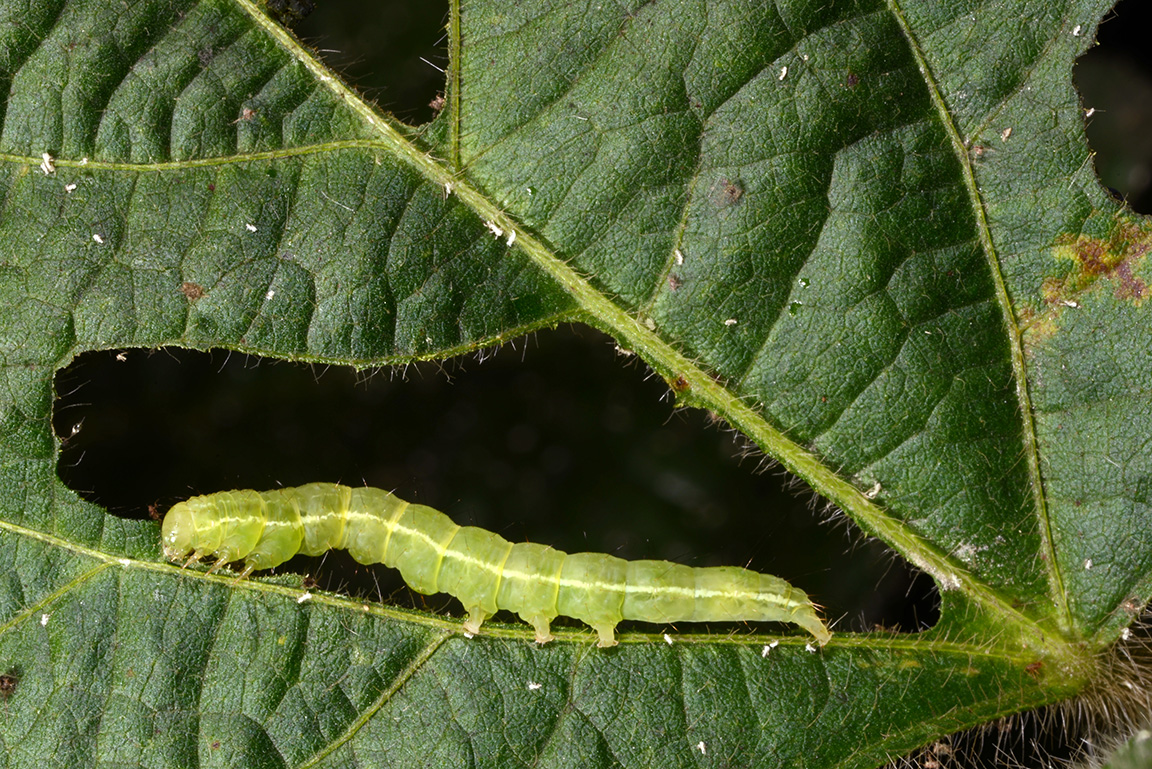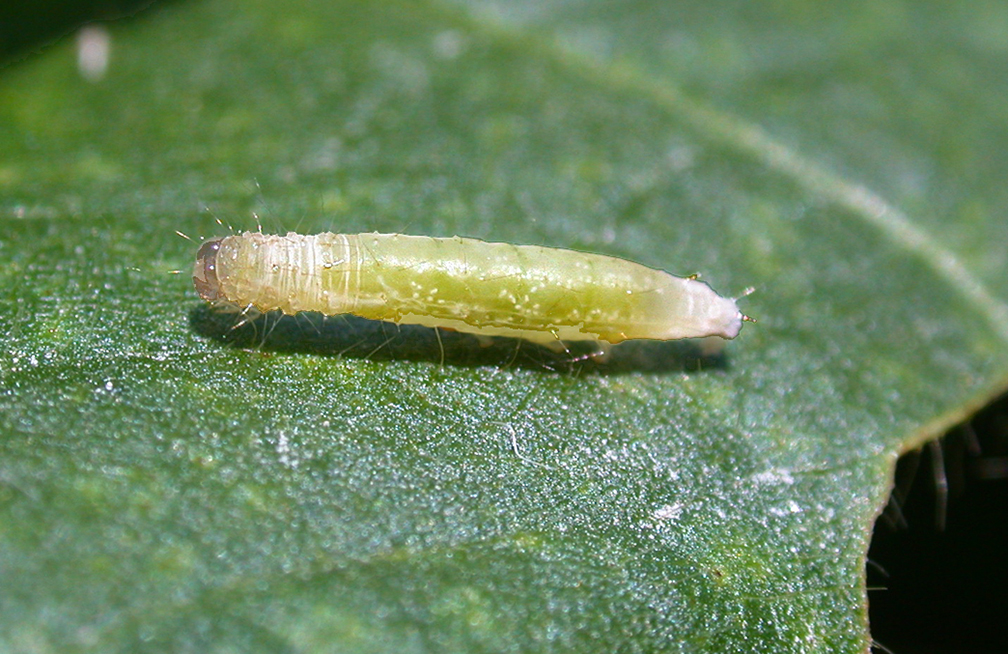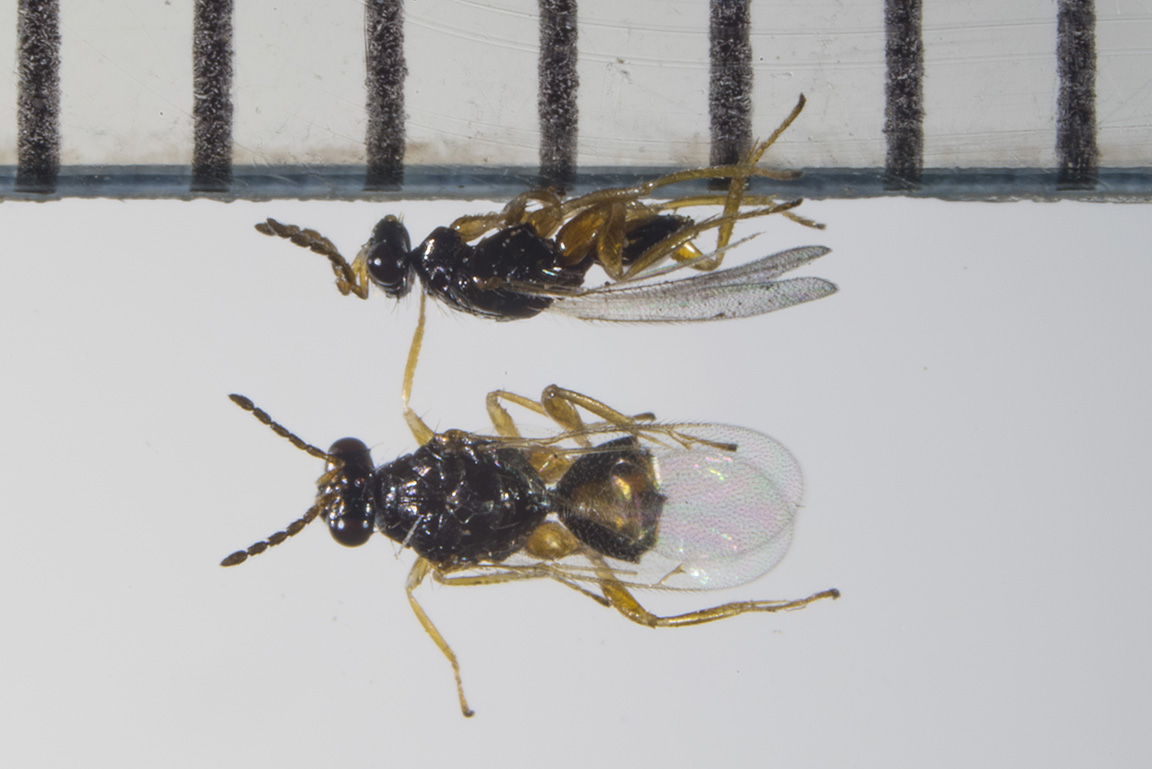A couple of weeks ago, we ran a story on an inordinate number of green cloverworm moth sightings around fields and farmsteads, “Black Moths Fluttering About Everywhere!” At that time, we suggested that natural controls, e.g., parasites and pathogens, weren’t as effective this year in limiting populations of this vulnerable caterpillar. Well, a visit to soybean fields this week revealed that we spoke a bit too soon, and “mother nature” has indeed caught up with this soybean foliage feeder.
Parasitized larvae, small, mottled brown, and cigar-shaped, were quite evident on the upper surface of soybean leaves. A very small, braconid wasp had laid an egg inside the caterpillar, now serving as the host. The egg hatches, the maggot emerges and begins feeding upon the caterpillar from the inside, avoiding critical internal organs like the stomach, while consuming fat deposits inside the caterpillar body cavity. It is in the parasite’s best interest to keep the caterpillar host alive and feeding until their development is complete, but eventually the caterpillar cannot keep up with the demands of this growing internal parasite and it dies, after which the outside of the caterpillar hardens, discolors, and tapers at the ends, leaving a cigar-shaped cadaver. The wasp larva pupates within this carcass and then chews an opening for emergence as a winged adult. This type of life cycle has served as an inspiration for many horror movies, including “Alien.”
Of course, soybean foliar feeding this late in the season is likely to be of only minor consequence, so the green cloverworm feeding isn’t of economic importance. But it’s always nice to see natural enemies pop in and do their thing!
See the following pictures.








